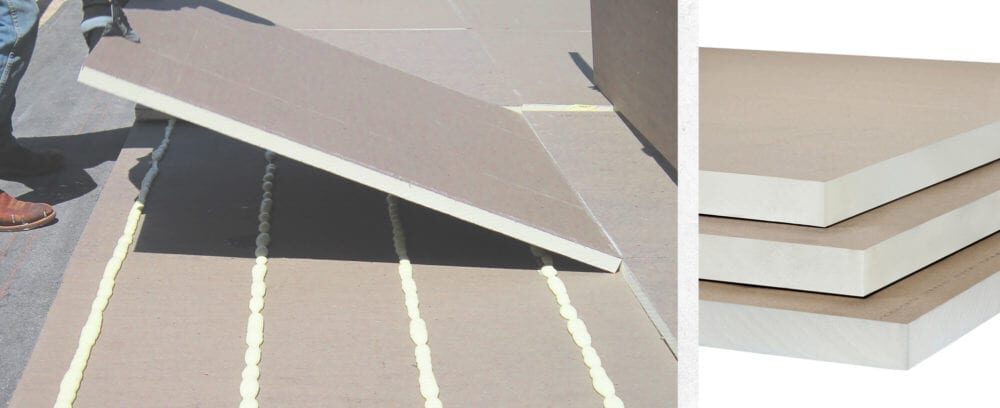
The roofing industry, particularly the commercial-industrial or “low slope” segment, tends to evolve at a snail’s pace. The odd miracle membrane or sub-component will come along (and often just as quickly fade away), but in general, nothing much changes. This has been exceptionally true for rigid board insulation. The major players are there today, just as they were 10 years ago, 20 years ago, and 30 years ago. Go to any roofing job site, and you will still see the same stacks of insulation as ever—among them, polyisocyanurate, or colloquially, iso-board.
It’s a decent insulator, and has withstood the test of time in Canada, remaining a major, if not dominant player, especially in the re-roofing market. Even with its shortcomings—a need for a cover board to prevent warping, susceptibility to moisture infiltration, and aged R-value issues—iso-board is still there, and still being “put down”, as roofers like to say.
In the last few decades, the world has evolved more quickly than roofing practices, especially environmentally. Public and private sector alike have had to adapt to a more stringent environmental attitude. There has finally been a realization that the earth is not one big dump for all the garbage we produce, construction products included.
But go to any roofing job site, and you’ll see that the old attitudes remain. To use more roofing parlance, roofers love to “rip roofs”. The first job of every shift is to cut and remove the existing membrane, flashings and insulation, down to the structural deck. Those materials get thrown into a dumpster, and the dumpster hauls the stuff off to a land-fill site. Repeat. Repeat. Repeat.
Regarding iso-board, estimates are that this board stock may have a practical life-span of up to 100 years. That’s very interesting, given the average life span of a newly installed roof, at (generously) 25 years. There is something very wrong with the calculus here. What about the other 75 years?
Practically speaking, no matter what lip service you may see on a roofing contractor’s website, or on the side of their pickup trucks, about their commitment to the environment is questionable. At the end of the day, they are really looking for the next “rip”, and that means the next round of trips to the landfill, which often will include iso-board that still has 75 years or more usable life expectancy. This is reality.
Perhaps roofing contractors, manufacturers, specifiers, design professionals, and especially building owners and managers should take a hard look at this disconnect, the 25-75 dilemma as outlined above. Maybe they should adopt a new paradigm when it comes to their roofing inventory, one that asks:
What should we do to keep our roofs going for 100 years, the same period of time that the polyisocyanurate insulation under them will last?
The fact is that there are alternatives to simply waiting 15 or 20 and 25 years and then “ripping” the roof. The terms have been around forever – roof management, roof maintenance, etc. There are, in fact, many alternatives to waiting for a roof to fail and then “ripping” it.
